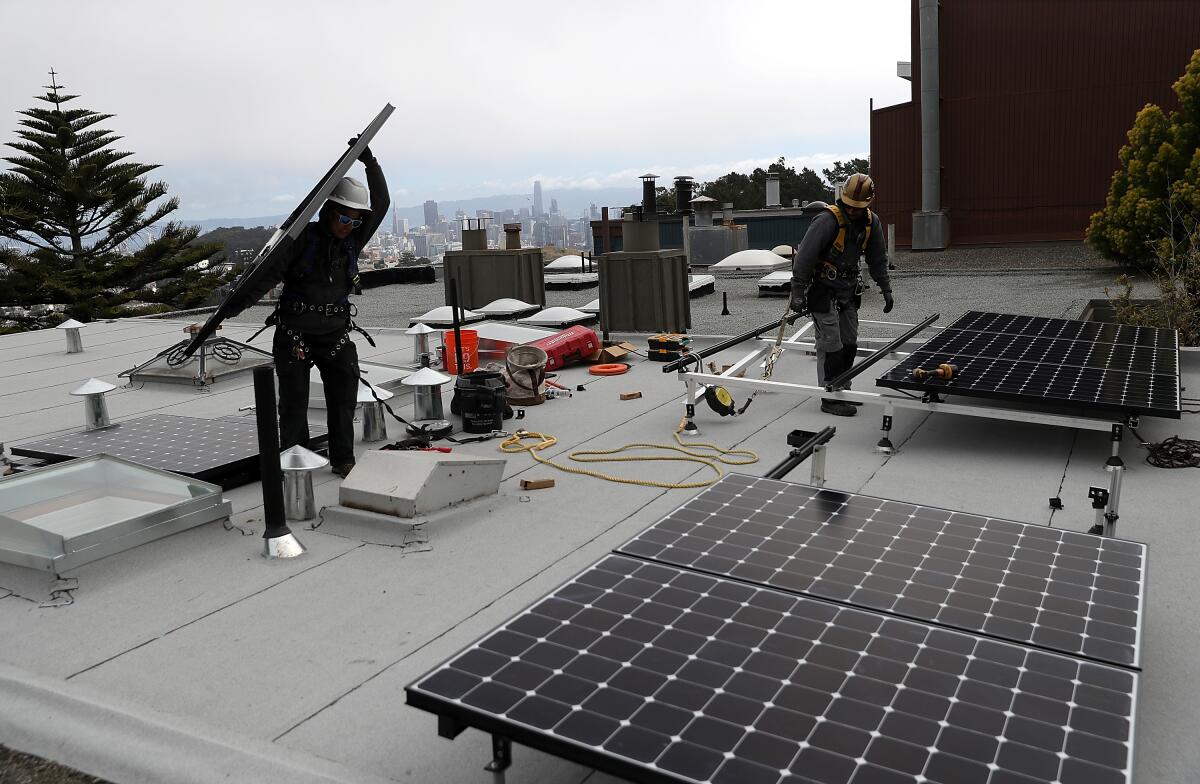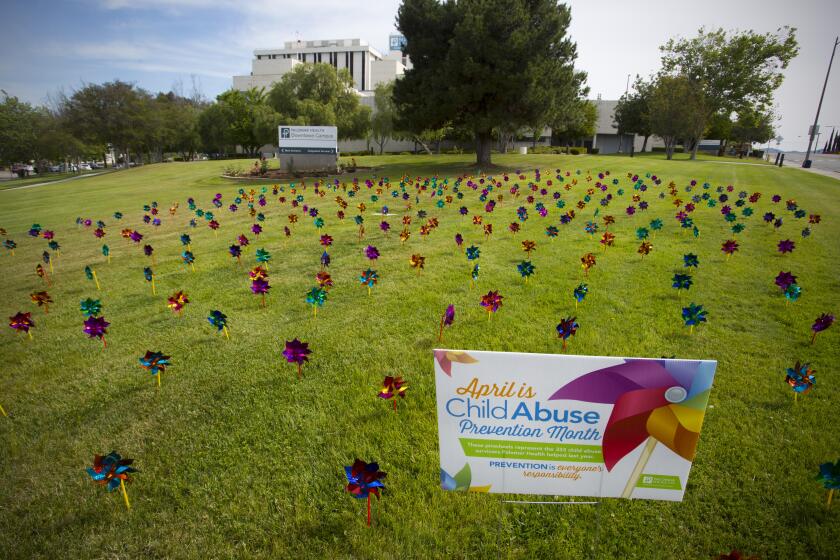Opinion: As a solar customer, I enjoy lower bills. But my savings come at a cost to others.

Too bad the CPUC decided to wait so long to take up the urgent need to address this inequitable burden on our non-solar neighbors.
Hong is president and CEO of the San Diego County Taxpayers Association. He lives in La Mesa.
While many Americans got excited this month about 2-2-22 and all the astrological coincidences that came with that numerical palindrome, I was excited about a totally different number: $56.56!
Why, you ask? It’s not a palindrome, but isn’t it oddly symmetrical? It’s not an everyday figure or price you see. And where did I see this unusually symmetric number that grabbed my attention?
Believe it or not: my electric bill!
With electric bills on the rise, many Californians feel frustrated and powerless, no pun intended, on what to do about it. Below, an activist makes the case for community micro-grids, a taxpayer advocate considers the inequity of solar rates, two former public officials say the state can use its huge surplus to shore up struggling utilities and the CEO of SDG&E outlines what it’s doing to respond to concerns.
We provide this platform for community commentary free of charge. Thank you to all the Union-Tribune subscribers whose support makes our journalism possible. If you are not a subscriber, please consider becoming one today.
It was beautiful to me, because that was how much I owed San Diego Gas and Electric after one full year of electricity usage after I got solar on my rooftop at home. One full year, folks!
But unlike 2-2-22, there was nothing really on that $56.56 bill that was astrological, however mystical it may have been to me. That was my “true up” amount after the utility added up the energy they sent me and subtracted the energy my solar sent to the grid. That’s the basic formula for this thing we are reading about in the paper these days: “net energy metering.”
Net energy metering allows customers who generate their own energy a financial credit on their electric bills for any surplus sent back to their utility, as defined by the California Public Utilities Commission. Sounds great, right?
Sadly, the truth isn’t that simple, especially if I care for my neighbors.
My family and I live in East County where it gets scorching hot compared to the coast, and we had the air conditioner running virtually nonstop last summer. Like many of you, I was working from home due to COVID-19 restrictions, but I also had an infant and a newborn to care for.
And I wasn’t going to have our summer be like the last one in 2020, before I got solar. That’s when I was worried if my baby would get heat rash or wouldn’t be able to sleep, and I would run the air conditioner — but only ever so often. I didn’t want a huge electric bill, so I was very careful on the thermostat. This last summer, though, I wasn’t going to risk it, and I blasted the air conditioning.
So when I got my “true up” bill and it was only $56.56, I have net energy metering to thank. While it’s well-documented and studied that San Diego County has the highest electric rates in the country, my family got by with an electric bill of less than five bucks a month last year. Without solar, my bill would have probably run north of $600 a month in the summer like it did in 2020.
Think about this for a moment: You and I have power — now nearly half renewable — but you and I didn’t put up the cash upfront to build and maintain the grid. You and I didn’t ask our elected leaders to use the state budget and taxpayer cash for the myriad things we demand: rate relief for our underserved, renewable requirements, wildfire protection, and so on.
All of these come at a price.
Net energy metering allows rooftop solar customers like me to push these costs to non-solar customers — increasing my neighbors’ utility bills. In San Diego, in fact, 20 cents of every dollar of a non-solar customer’s electric bill is paying for what solar customers do not according to our analysis.
And rooftop solar is expensive. So those who can afford it are typically wealthier than the average utility ratepayer. That means their share of fixed costs gets shifted to those who are poorer on average. The UC Berkeley Energy Institute at Haas School of Business said it best: “Net Energy Metering hurts the poor. It’s that simple.”
This is an equity issue, and it is due to the Califonia Public Utilities Commission’s rate structure.
Too bad the CPUC decided to wait so long to take up the urgent need to address this inequitable burden on our non-solar neighbors.
This would have been a good time to make some beautiful numbers for those who could use the break.
Get Weekend Opinion on Sundays and Reader Opinion on Mondays
Editorials, commentary and more delivered Sunday morning, and Reader Reaction on Mondays.
You may occasionally receive promotional content from the San Diego Union-Tribune.






